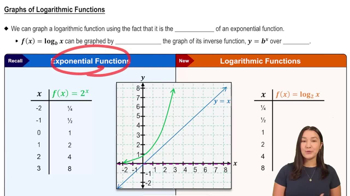Table of contents
- 0. Functions7h 52m
- Introduction to Functions16m
- Piecewise Functions10m
- Properties of Functions9m
- Common Functions1h 8m
- Transformations5m
- Combining Functions27m
- Exponent rules32m
- Exponential Functions28m
- Logarithmic Functions24m
- Properties of Logarithms34m
- Exponential & Logarithmic Equations35m
- Introduction to Trigonometric Functions38m
- Graphs of Trigonometric Functions44m
- Trigonometric Identities47m
- Inverse Trigonometric Functions48m
- 1. Limits and Continuity2h 2m
- 2. Intro to Derivatives1h 33m
- 3. Techniques of Differentiation3h 18m
- 4. Applications of Derivatives2h 38m
- 5. Graphical Applications of Derivatives6h 2m
- 6. Derivatives of Inverse, Exponential, & Logarithmic Functions2h 37m
- 7. Antiderivatives & Indefinite Integrals1h 26m
- 8. Definite Integrals4h 44m
- 9. Graphical Applications of Integrals2h 27m
- 10. Physics Applications of Integrals 2h 22m
4. Applications of Derivatives
Differentials
Problem 4.7.70
Textbook Question
Evaluate the following limits. Use l’Hôpital’s Rule when it is convenient and applicable.
lim_x→∞ (log₂ x - log₃ x)
 Verified step by step guidance
Verified step by step guidance1
Identify the form of the limit as x approaches infinity. The expression log₂(x) - log₃(x) is of the indeterminate form ∞ - ∞.
To apply l'Hôpital's Rule, we need to rewrite the expression in a form suitable for the rule, such as 0/0 or ∞/∞. Rewrite the expression as a single fraction: (log₂(x) - log₃(x)) = (log(x)/log(2) - log(x)/log(3)).
Combine the terms into a single fraction: (log(x)/log(2) - log(x)/log(3)) = (log(x) * (1/log(2) - 1/log(3))).
Simplify the expression: (log(x) * (1/log(2) - 1/log(3))) = log(x) * ((log(3) - log(2))/(log(2) * log(3))).
Now, evaluate the limit as x approaches infinity: lim_x→∞ (log(x) * ((log(3) - log(2))/(log(2) * log(3)))). Since log(x) approaches infinity as x approaches infinity, the limit depends on the constant factor ((log(3) - log(2))/(log(2) * log(3))).
 Verified video answer for a similar problem:
Verified video answer for a similar problem:This video solution was recommended by our tutors as helpful for the problem above
Video duration:
3mPlay a video:
Was this helpful?
Key Concepts
Here are the essential concepts you must grasp in order to answer the question correctly.
Limits
Limits are fundamental in calculus, representing the value that a function approaches as the input approaches a certain point. They are essential for understanding continuity, derivatives, and integrals. In this context, evaluating the limit as x approaches infinity helps determine the behavior of the function at extreme values.
Recommended video:

One-Sided Limits
Logarithmic Functions
Logarithmic functions, such as log₂ x and log₃ x, are the inverses of exponential functions. They are crucial for solving equations involving exponential growth or decay. Understanding the properties of logarithms, including their behavior as x approaches infinity, is key to simplifying and evaluating the limit in the given problem.
Recommended video:

Graphs of Logarithmic Functions
l'Hôpital's Rule
l'Hôpital's Rule is a method for evaluating limits that result in indeterminate forms like 0/0 or ∞/∞. It states that if these forms occur, the limit of the ratio of two functions can be found by taking the derivative of the numerator and the derivative of the denominator. This rule is particularly useful in the given limit problem to simplify the expression involving logarithms.
Recommended video:
Guided course

Power Rules







